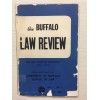
Fines and Fees Justice Center
The Fines & Fees Justice Center seeks to restore integrity to our justice system by catalyzing a movement to eliminate the fines and fees that distort justice. Our goal is to eliminate fees in the justice system and to make fines proportional to the offense and the individual. As national center for advocacy, information, and collaboration, FFJC’s mission is to create a justice system that treats individuals fairly, ensures public safety and community prosperity, and is funded equitably. Led by two nationally-recognized experts, FFJC works collaboratively with justice system stakeholders and affected communities to end abusive collection practices and eliminate the justice tax. To accomplish our mission, FFJC is developing a model for comprehensive reform in the states, creating a National Clearinghouse, and providing support for reform efforts around the country.






